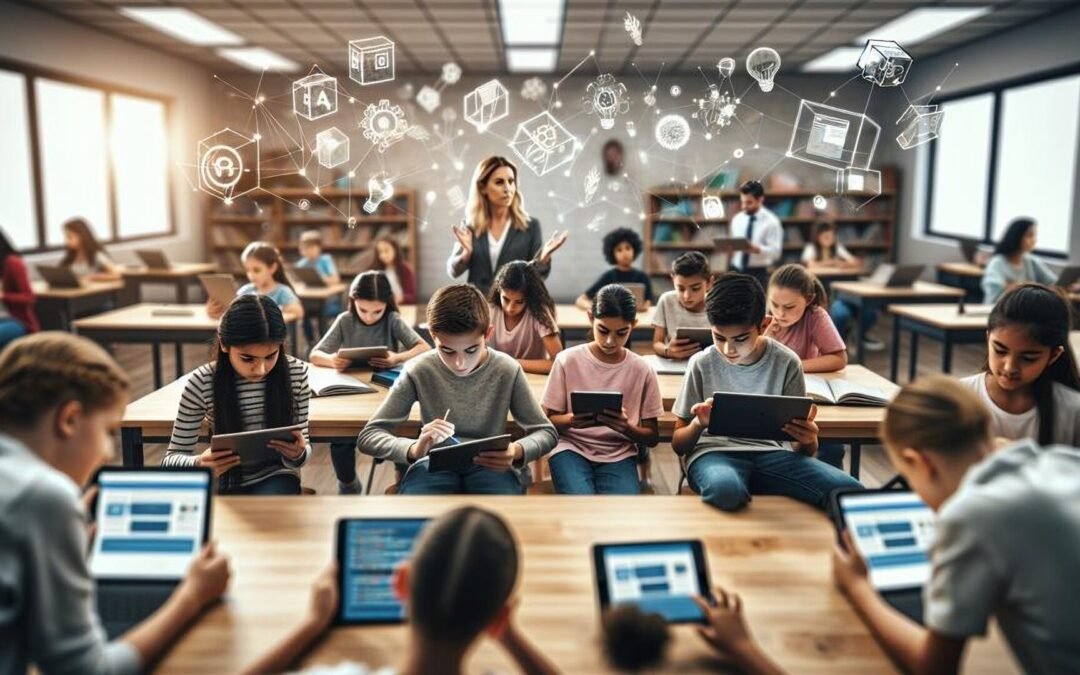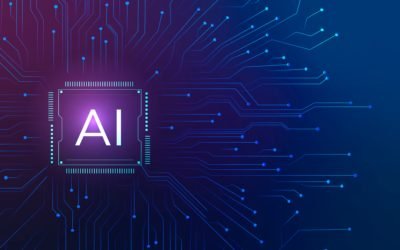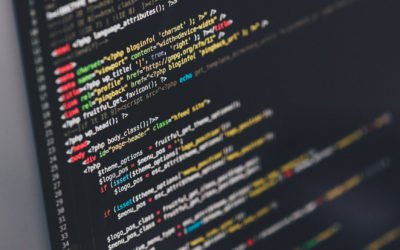If you have grandchildren or teenagers and have been paying attention, you've likely noticed the growing concern about social media and its potential negative impact on teens' mental well-being. This is not a passing trend but a pressing issue that demands our...

How AI Will Revolutionize K-8 Education: A Grandparent’s Guide
by admin | Dec 7, 2024 | Education
If you have children or grandchildren in elementary or middle school, you’ve likely heard the buzz: “AI is coming to the classroom.” It can sound like something out of a sci-fi flick, but if you recall how calculators, personal computers, and later the internet reshaped schooling, you’ll understand that technology has always prompted shifts in how students learn.
Now, it’s Artificial Intelligence—smarter, faster, more intuitive—poised to revolutionize K-8 education. This isn’t about turning your loved one’s classroom into a futuristic robot lab; it’s about harnessing cutting-edge tools to give teachers more breathing room, provide students with customized support, and prepare them for a world where AI will be as commonplace as smartphones are today.
Understanding the AI Landscape in Education
AI-powered educational platforms can deliver personalized learning, real-time student feedback, and automated assessment, taking some rote work off teachers’ shoulders. According to a report by the World Economic Forum (2020) and research from the Brookings Institution (2022), when thoughtfully integrated, these technologies can improve student performance, foster greater engagement, and help educators spot learning difficulties earlier than ever.
Key Changes AI May Bring to K-8 Classrooms
• Personalized Learning Paths
Remember your granddaughter struggling with fractions? With AI-driven tutors, she receives exercises tailored to her exact skill level. These systems can adapt in real-time, giving hints and explanations whenever she’s stuck and challenging her further when she’s ready. It’s like having a private math coach who never gets tired.
• Automated Grading and Time Management
Teachers often spend hours grading papers, leaving less time for individual help. AI can take on the bulk of routine assessments, from spelling quizzes to math drills, providing instant feedback and data for teachers. This frees educators to focus on lesson planning, face-to-face instruction, and student engagement.
• Enhanced Homework Help at Home
When the kids arrive at your house with homework, imagine them asking a voice-based AI tutor for help understanding how plants convert sunlight into energy. The AI explains photosynthesis in a child-friendly way and can follow up with a few questions to ensure comprehension.
• Early Detection of Learning Challenges
Instead of waiting until a parent-teacher conference to learn that your grandson is struggling with reading, AI can flag early indicators long before noticeable test scores drop. By analyzing student work patterns, these systems detect emerging issues—like difficulty in understanding vowel sounds—and notify teachers and parents promptly.
• Bridging Language Barriers to Inclusivity
If your granddaughter’s classroom is a melting pot of cultures and languages, AI translation and language-learning tools can help every student thrive. From real-time translation of classroom instructions to personalized ESL practice, these tools promote inclusivity and ensure no child feels left behind.
• More Time for Creativity and Critical Thinking
Contrary to fears that AI will dominate the classroom, it can allow teachers to focus on what machines can’t do: inspire creativity, nurture critical thinking, and encourage collaboration. With basic tasks handled by AI, teachers can guide debates, supervise art projects, and spark a love of learning.
• Rethinking the Teacher’s Role, Not Replacing It
Will AI displace teachers? Experts say that’s unlikely. Rather than substituting teachers, AI tools are skilled assistants, handling routine tasks and offering data-driven insights. Teachers become facilitators of deeper learning, mentors who help students interpret information, and role models of ethical and respectful use of technology. That said, teachers must adapt, change, and be willing to learn and use AI. For those teachers who embrace AI, they will outpace and outlast their peers.
• Addressing Socioeconomic Gaps and Equity Concerns
Only some schools can afford the latest technology. AI can widen existing gaps if not implemented thoughtfully. Policymakers, educators, and communities must work together to ensure that all students, regardless of their ZIP code or family income, have access to these tools and opportunities.
• Ensuring Data Privacy and Ethics
AI tools rely on data—lots of it. This means personal information must be carefully safeguarded. Parents, teachers, and administrators must understand privacy policies and push for transparent, ethical, and responsible data use. We must protect students’ digital footprints as vigilantly as we once protected their report cards.
The Bottom Line:
AI in K-8 education isn’t about giving the reins to robots; it’s about employing powerful new tools to enrich learning, free teachers to do what they do best, and help every child find their path to success. Grandparents and parents can play a vital role by staying informed, asking questions, and advocating for responsible, ethical, and equitable use of AI in their children’s schools.
When thoughtfully integrated, AI doesn’t replace the warmth of a teacher’s smile or the supportive arm of a grandparent—it simply enhances the learning environment, preparing today’s youth to face a rapidly changing world with confidence and curiosity.
AI will revolutionize learning and teaching. AI technology in the classroom will be a game-changer for many students, particularly, for the students who don’t excel at math and learning, in general.
It will be important for grandparents and parents to have a basic understanding of AI and how they can grow along with their grandkids and make learning fun and engaging.




